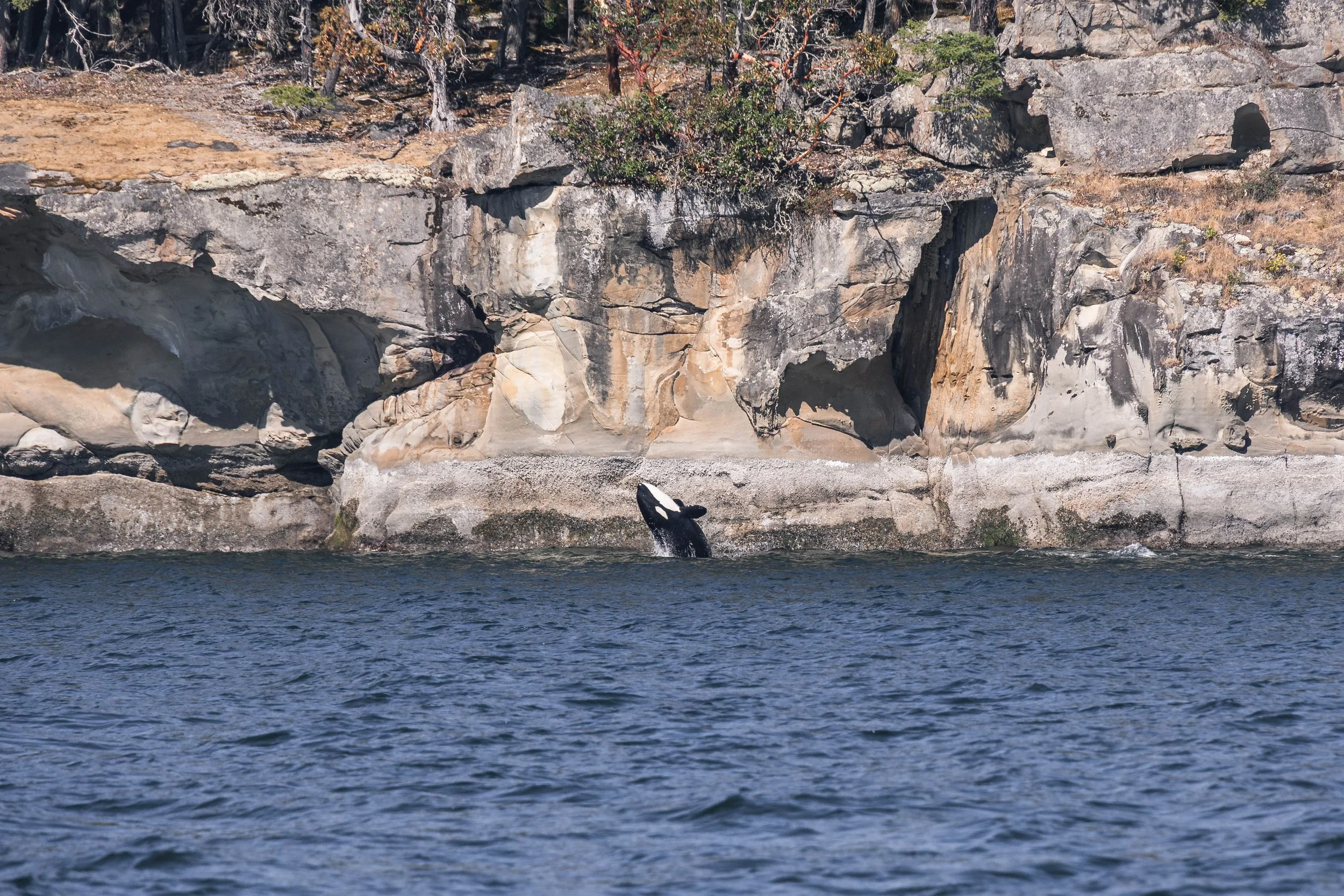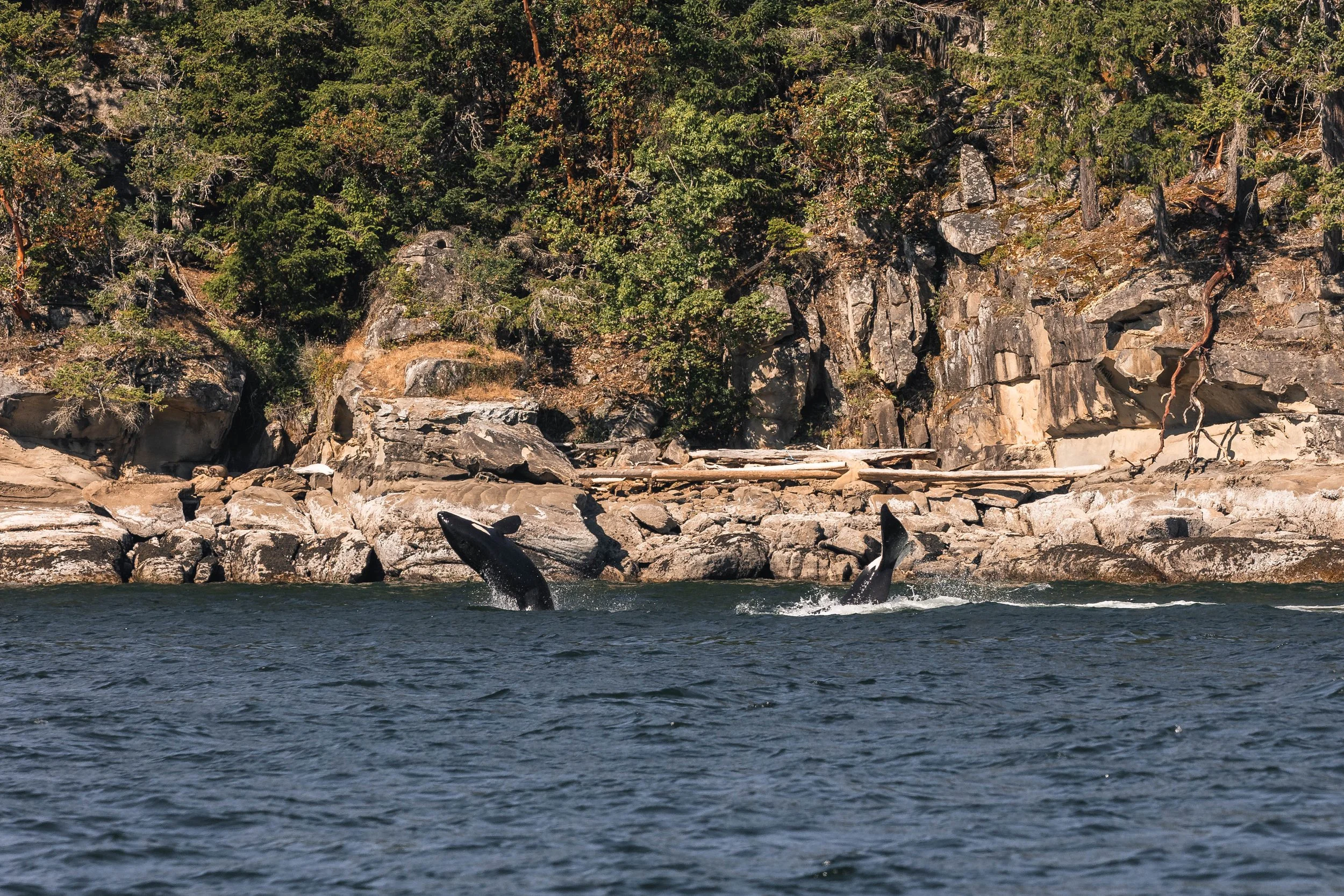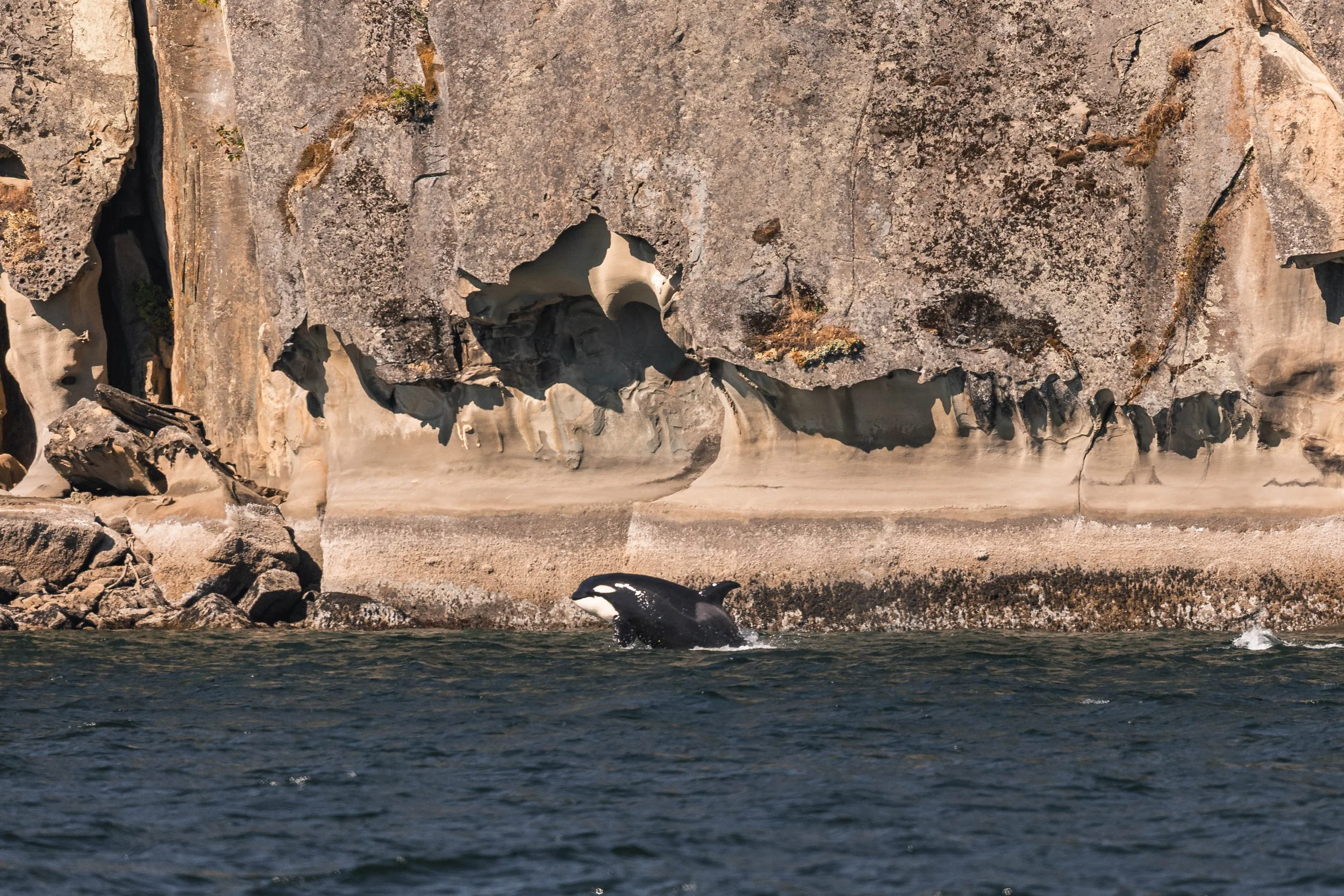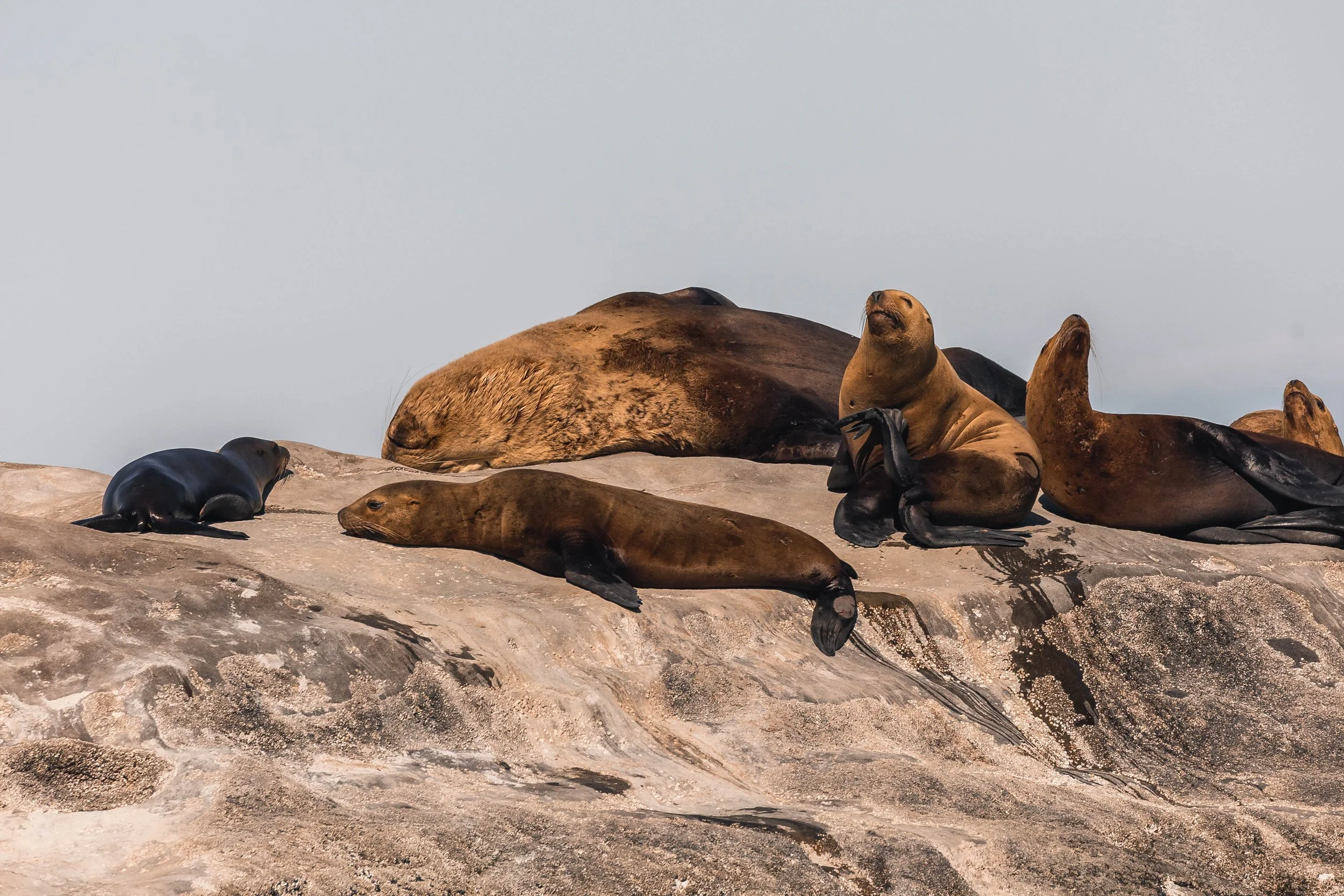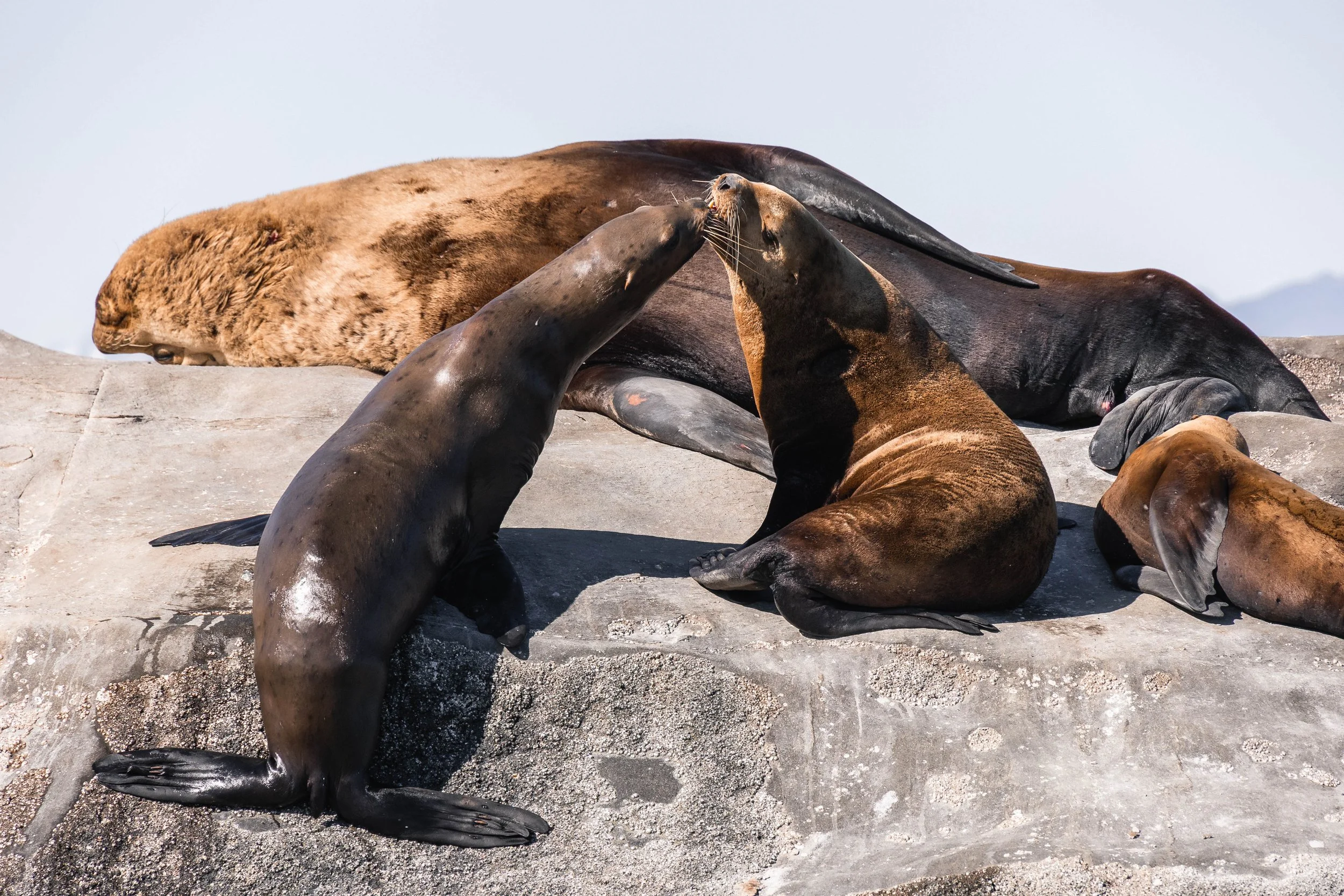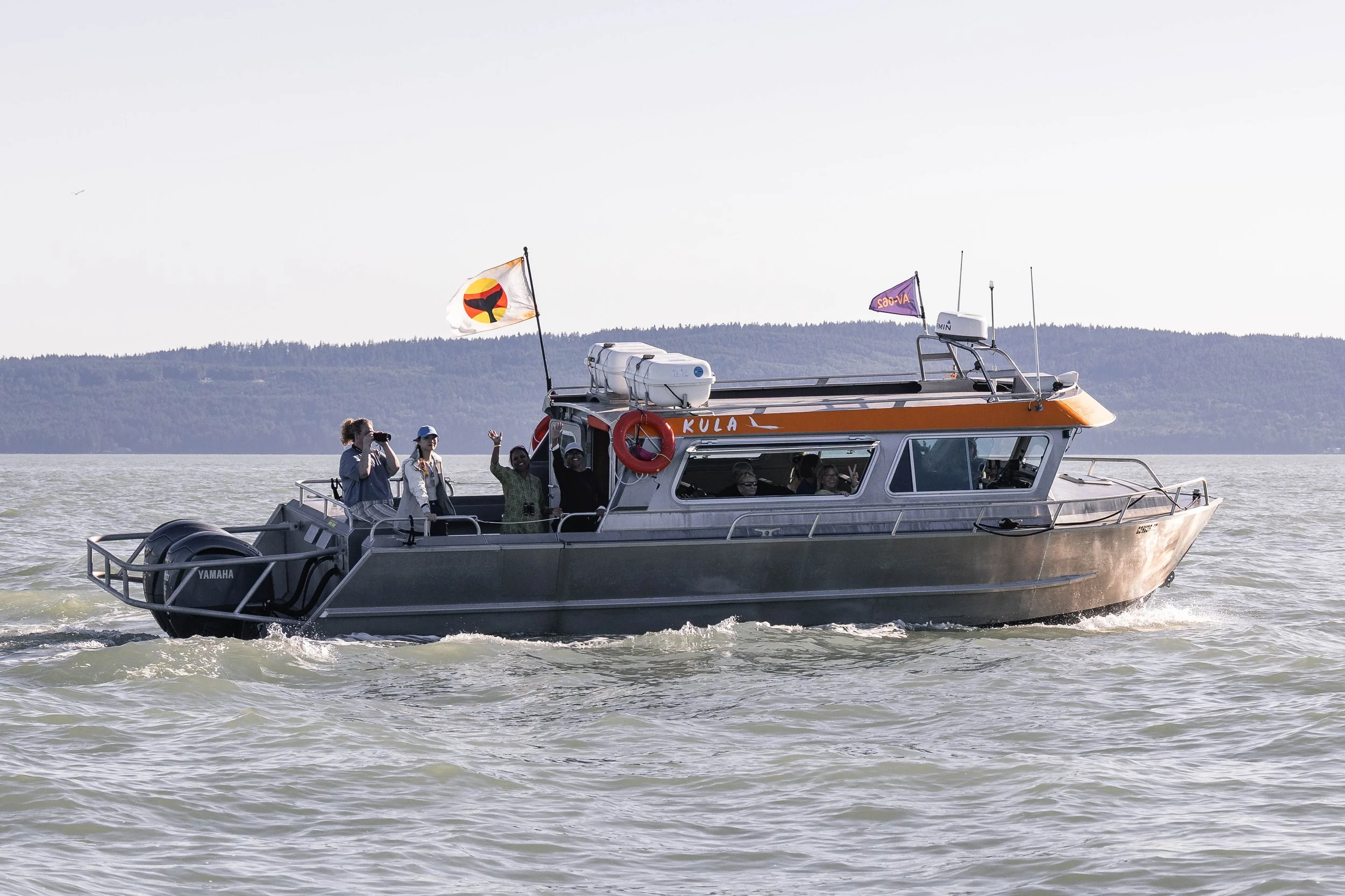June 29, 2025, 3:30 PM - Having a great time with the T065Bs and a trio of Humpbacks
We left the dock on the afternoon of the 29th, excited to see what whales might be waiting for us out in the Salish Sea this time. We had an idea of who we might find, since we had spotted both species of whale (orca and humpbacks) during the morning tour. Sometimes that doesn’t mean much for the afternoon, as the whales are always on the move, but today we did end up spotting some of the same whales.
Sightings started with the orca on this tour, seeing the T065Bs who seemed to be socializing just east of Valdes Island. The T065Bs consist of 4 members:
T065B Chunk ♀ (1993)
T065B1 Birdsall ♂ (2011)
T065B2 Nettle ♂ (2019)
T065B3 ♂ (2023)
We saw all sorts of surface activity from these whales, from full breaching to porpoising, and lots of tail slaps and cartwheels. It seemed they were having a blast, Birdsall leading the charge, followed by his younger siblings and his mother. Activity while watching whales is quite rare; most of their time is spent travelling as opposed to this. Activity from the orca is usually due to three factors: it might be that they are acting antagonistically toward each other or other species, they will use surface activity as part of hunting, or (like today) when they’re being social. While each reason leads to surface behaviour, the purpose of it is much different. Take the tail slaps, for example. Sometimes the impact of the tail hitting the water can help to stun prey, or it might happen because they miss the stunning strike and send their tail up into the air. If they’re socializing, the tail slaps would mostly be fun or serve as some communication with the sound of the impact. This sound may also be used if they are harassing other species, using it almost as a threat display, scaring the other wildlife while not necessarily trying to hurt them.
Getting to see it in a social sense is usually our favourite, as it’s fun to see the whales having fun as well. When we watch whales, we limit the amount of time spent with them so that we won’t be disturbing them, so eventually it came time to leave the T065Bs to their activity.
Next up, we spotted some humpbacks travelling in the area. It was relatively easy to spot these whales, as they were also quite active at the surface. We saw these whales breaching fully out of the water as well, which is quite an energetically taxing thing to do. When a fully grown humpback throws itself out of the water, it takes about the energy equivalent of a human running a marathon. Similarly to how there are a few reasons that orca might breach, there are a few leading theories as to why the humpbacks do it.
First, it might be to knock parasites off their bodies. Humpbacks carry three main parasites on them: the Humpback Whale Acorn Barnacle, the Rabbit Eared (gooseneck) Barnacle, and Whale Lice. All three of these can combine to add an extra 500 pounds of weight to the whale, or about the same amount as human clothes weigh compared to them. If you have ever felt the relief of taking off the heavy work clothes at the end of the day, that might be what these whales were hoping to accomplish through the breaching.
They might also be using the activity as long-distance communication, as the sound travels quite a distance under the water. But the third one is one we think might be the most likely in this case, and that is that it’s fun! Usually with the fun breaches, there is other socializing going on, which this trio of humpbacks seemed to be doing today. We were easily able to ID two of the three as Chi (BCZ0575) and Kelpie (BCY1276), but the other one didn’t show off it’s tail, so we were unable to match it thus far. If we do figure it out in the future, we will be sure to update it here!
After the whales, we quickly stopped to see some other wildlife, including the boisterous sea lions and much calmer Harbour Seals at Stinky Rock. Finally, we ended the tour at the Gabriola Bluffs, watching the cormorants flying in and out of where they nest on the cliffs. It was a wonderful end to a great day! The onboard Marine Naturalists Desarae Poier and Hayleigh Hilbert captured some great photos throughout the tour, which you can enjoy below!
Trowing tails! Photo by Hayleigh Hilbert.
Splashing away! Photo by Hayleigh Hilbert.
T065B3 with a backdive. Photo by Hayleigh Hilbert.
Breach for the sky. Photo by Desarae Poier.
Coming in for a landing. Photo by Hayleigh Hilbert.
Still breaching! Photo by Desarae Poier.
The family was very active this tour! Photo by Desarae Poier.
T065B1 Birdsall charging ahead. Photo by Desarae Poier.
T065B3 jumping. Photo by Desarae Poier.
T065B1 Birdsall with T065B2 Nettle following and T065B3 behind them. Photo by Desarae Poier.
T065B1 Birdsall with T065B3 in tow. Photo by Desarae Poier.
T065B Chunk. Photo by Desarae Poier.
T065B1 Birdsall. Photo by Desarae Poier.
T065B1 Birdsall. Photo by Hayleigh Hilbert.
T065B1 Birdsall. Photo by Hayleigh Hilbert.
Chi’s dorsal fin. Photo by Desarae Poier.
Kelpie breaching. Photo by Desarae Poier.
A flying Kelpie. Photo by Desarae Poier.
Chi fluking. Photo by Desarae Poier.
Kelpie fluking. Photo by Desarae Poier.
A breach with Vancouver in the background. Photo by Desarae Poier.
Kelpie coming in for a landing. Photo by Desarae Poier.
A gull on the rocks. Photo by Hayleigh Hilbert.
Chubby harbour seals. Photo by Desarae Poier.
All different sizes of Steller Sea Lions sleeping in the sunshine. Photo by Desarae Poier.
A cuddle puddle. Photo by Desarae Poier.
These two Stellers both want this perticular spot on the rocks. Photo by Hayleigh Hilbert.
Kula in the sun! Photo by Hayleigh Hilbert.



